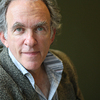
Bruce Schechter
Auteur van My Brain Is Open; The Mathematical Journeys of Paul Erdős
Werken van Bruce Schechter
Tagged
Algemene kennis
- Gangbare naam
- Schechter, Bruce
- Geslacht
- male
- Opleiding
- Massachusetts Institute of Technology (PhD|Physics)
Leden
Besprekingen
Prijzen
Misschien vindt je deze ook leuk
Gerelateerde auteurs
Statistieken
- Werken
- 3
- Leden
- 305
- Populariteit
- #77,181
- Waardering
- 3.9
- Besprekingen
- 8
- ISBNs
- 10
- Talen
- 4
- Favoriet
- 1













